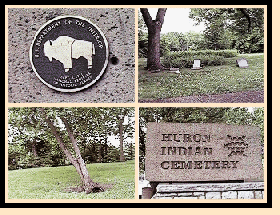About Our Area

Kansas City and Wyandotte County are culturally diverse and offer big city advantages with hometown living. Close-knit neighborhoods are an appealing feature of the region. Some of the annual events that show our diversity are: Cinco de Mayo Fiesta, Polski Days, Americana Weekend, St. Johnís Fiesta, the Scottish Highland Games, KCK Blues Festival, Farm Heritage Days, Latino Summerfest, International Linemanís Rodeo, Oktoberfest, and Silver City Days.
 The area offers a wide range of leisure opportunities, including a 1500-acre park and lake. Annual area social activities include the Grinter House Applefest, the county fair, and the Autumn Gold parade. The county is home to the Kansas Speedway, featuring NASCAR races, and the Woodlands, where dog and horse races are held. The Renaissance Festival performs here in the fall, and nearby is a large outdoor ampitheatre where concerts are performed.
The area offers a wide range of leisure opportunities, including a 1500-acre park and lake. Annual area social activities include the Grinter House Applefest, the county fair, and the Autumn Gold parade. The county is home to the Kansas Speedway, featuring NASCAR races, and the Woodlands, where dog and horse races are held. The Renaissance Festival performs here in the fall, and nearby is a large outdoor ampitheatre where concerts are performed.
The area has a rich history which dates back to the very early part of the 1800s when the Lewis & Clark Expedition camped here for a lengthy period.
Although much of what is now Wyandotte County was originally two Indian reserves, belonging to the Shawnee and Delaware tribes, the eastern part of the county was largely uninhabited. In the mid 1840s, a frontier river town called Wyandott was established in the area. The town was the settlement of the Wyandot Indians, who had moved to Kansas from Ohio.
The Wyandot were well-educated people who easily assimilated with others in the area. They had formed a tribal government which operated under a constitutional system, and had various executive and judicial functions resembling the federal government. They made history in 1855 by dissolving their official tribal status in favor of U.S. Citizenship. Wyandot descendants have made significant contributions to the city and county.
The Huron Cemetery
 The Wyandot formed the Huron Cemetery on a high ridge which overlooked the Kansas and Missouri Rivers. They suffered huge losses of life during widespread epidemics in 1843 and 1844. Nearly 300 died and were buried in the cemetery. By 1855, there were at least 400 burials, many without tombstones.
The Wyandot formed the Huron Cemetery on a high ridge which overlooked the Kansas and Missouri Rivers. They suffered huge losses of life during widespread epidemics in 1843 and 1844. Nearly 300 died and were buried in the cemetery. By 1855, there were at least 400 burials, many without tombstones.
Around turn of the century, urban sprawl was rampant, and infringement of civilization upon the cemetery was imminent. Developers convinced the Wyandot to sell the cemetery, and move the remains to Quindaro Cemetery.
 In 1906, the Conley sisters, Lydia, Helena, and Ida, who were Wyandot descendants, led a successful resistance to this proposed action. They established "Fort Conley" on the cemetery grounds and manned it day and night. They padlocked the front gate and hung a sign on it warning all persons to "Trespass at Your Peril." Over the graves of their parents, they erected a small building where they slept during their vigil. Activism concerning the cemetery continued over the next decade and beyond, until September 1971, when the Huron Indian Cemetery was placed on the National Register of Historic Sites. In 1906, the Conley sisters, Lydia, Helena, and Ida, who were Wyandot descendants, led a successful resistance to this proposed action. They established "Fort Conley" on the cemetery grounds and manned it day and night. They padlocked the front gate and hung a sign on it warning all persons to "Trespass at Your Peril." Over the graves of their parents, they erected a small building where they slept during their vigil. Activism concerning the cemetery continued over the next decade and beyond, until September 1971, when the Huron Indian Cemetery was placed on the National Register of Historic Sites.
|

The area offers a wide range of leisure opportunities, including a 1500-acre park and lake. Annual area social activities include the Grinter House Applefest, the county fair, and the Autumn Gold parade. The county is home to the Kansas Speedway, featuring NASCAR races, and the Woodlands, where dog and horse races are held. The Renaissance Festival performs here in the fall, and nearby is a large outdoor ampitheatre where concerts are performed.
The Wyandot formed the Huron Cemetery on a high ridge which overlooked the Kansas and Missouri Rivers. They suffered huge losses of life during widespread epidemics in 1843 and 1844. Nearly 300 died and were buried in the cemetery. By 1855, there were at least 400 burials, many without tombstones.
In 1906, the Conley sisters, Lydia, Helena, and Ida, who were Wyandot descendants, led a successful resistance to this proposed action. They established "Fort Conley" on the cemetery grounds and manned it day and night. They padlocked the front gate and hung a sign on it warning all persons to "Trespass at Your Peril." Over the graves of their parents, they erected a small building where they slept during their vigil. Activism concerning the cemetery continued over the next decade and beyond, until September 1971, when the Huron Indian Cemetery was placed on the National Register of Historic Sites.

